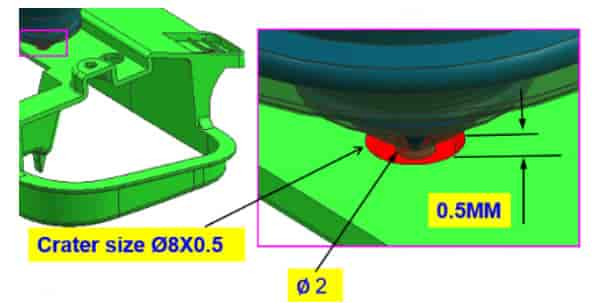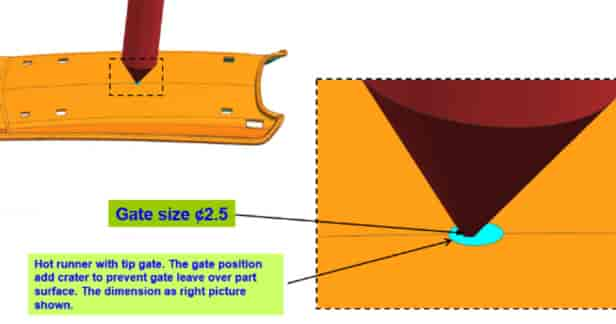As the connecting area between the runner and the cavity, the gate plays a vital role in the injection molding process. Gates-their style and where they are placed can affect the overall cycle time, the cost of the mold, and the appearance of a molded part. Therefore, it is important to know how to use the gate before starting an injection molding project.

This Blog looks at the six most common gate types used in plastic injection molding:
side gates, tab gates, direct gates, hot gates, pin gates, and sub-gates. It looks at the properties of these unique gate styles and provides suggestions when to best use them.
Molten plastic material is injected into a mold cavity, causing the material to solidify and form a product. This process involves passing molten plastic through gates and runners until it is able to reach the gate, which opens up an opening that allows the molten plastic to enter the mold cavity.
Not all gates are the same. Gates can be located at various points around the mold cavity, depending on the part and material, they can take different forms: wide and narrow; Some are tapered, and some maintain a uniform diameter.
The injected molten plastic solidifies in the mold cavity to form a part, but the plastic also solidifies at the gate, leaving a solid protrusion out of the part.
Therefore, the gate must be trimmed-this process is called tapping-either automatically (through the injection molding machine) or manually after the part is extruded.
The position of the gate determines the position where the material enters the cavity, and the style of the gate affects the force, angle, and temperature when the material flows.
This in turn had a great impact on the results of this section. The importance of the gate can be seen, for example, the size of the gate is too small. A gate that is too small will cause the buildup of material pressure, causing the material to squeeze into the cavity too quickly in a motion called jetting.
The jet will produce wavy defects around the gate. The importance of gate position is even easier to see. The first and most important thing is that the gate will leave a flaw where it is removed, so placing the gate in the visible area of the part may cause cosmetic problems.
The gate also needs to be installed at a safe distance from the pins and cores, ideally close to thick-walled areas, to promote flow and prevent defects such as welding marks.
Gate position reminder:
Keep away from the core and pins
Leave open space
Reduce the length of the runner
Use multiple gates when necessary
3. Manual Trim Gates
These three gate types need to be manually removed after the part is ejected from the mold.
1) Edge gate
Among injection molding gate types, edge gates are the most common. It is placed on the edge of the part, leaving a visible mark on the parting line.
The edge gate is suitable for:
Flat part
Medium-thick slices
2) Tab Gate
Tab gate is another common form of gate, which contains a tab section, which can safely absorb shear stress without affecting the quality of the part.
The tab gate is suitable for:
Thin and flat parts
PC, ABS, acrylic and other materials
3) Direct/Straight Gate
A direct gate, sometimes called the gate, can almost be thought of as no gate: the gate brings the material directly into the cavity. The direct gate is easy to realize but produces high tensile stress around the gate.
The direct gate is suitable for:
Single cavity mold
Non-aesthetic part
4) Automatic trimming gates
As the injection molding machine ejects the final product from the mold, these three types of gates are designed to be automatically removed.
5) Hot Tip Gate
Hot tip gate is a type of gate specially used for hot runner system: injection molding device with heated nozzle. Hot tip gates usually appear on the top of the part instead of the parting line; It will leave a small bump on the surface.
Hot tip gates are suitable for:
Round and tapered parts
Hot runner system


PPS Industrial is an injection molding expert who can handle all your plastic moulds and short-term production needs. If you have questions about the part design,mold bulding, and injection molding.get in touch with us. we has experience to guide you in the right direction.